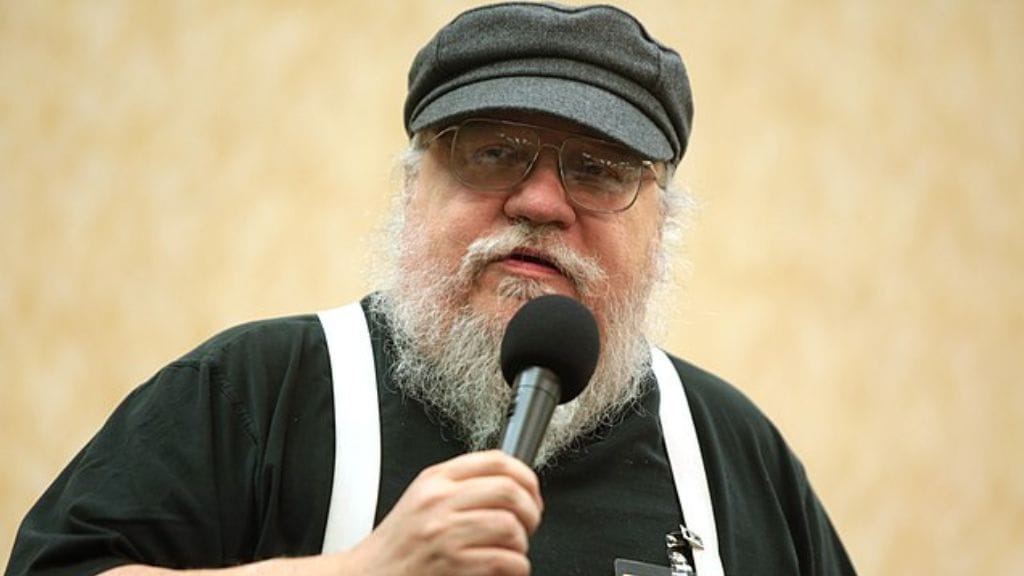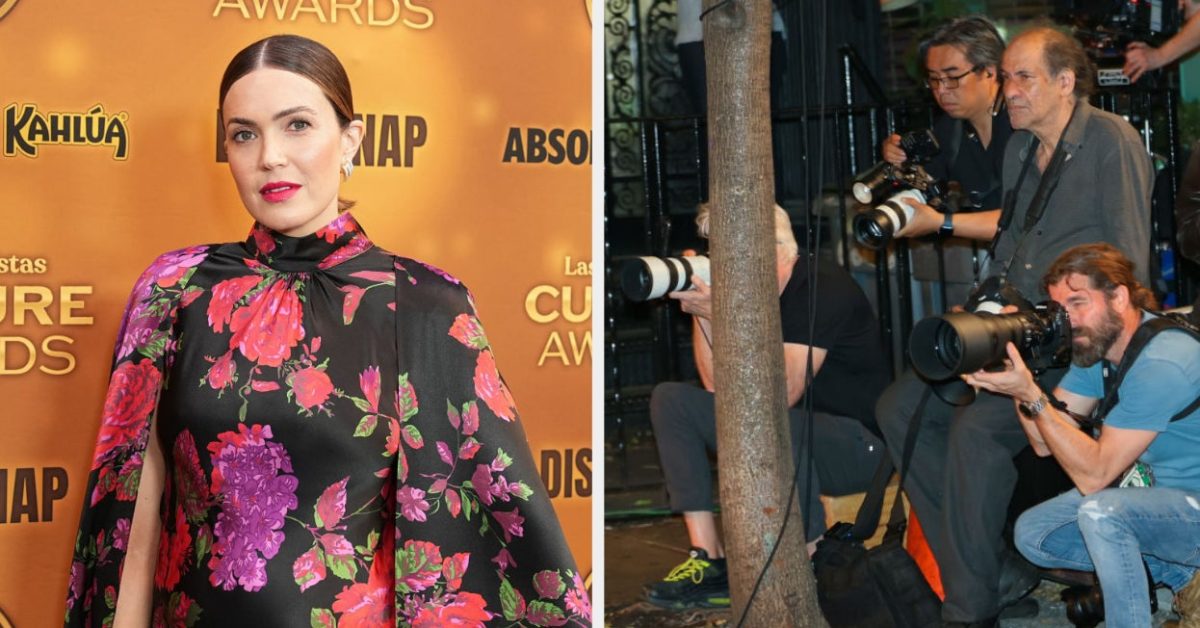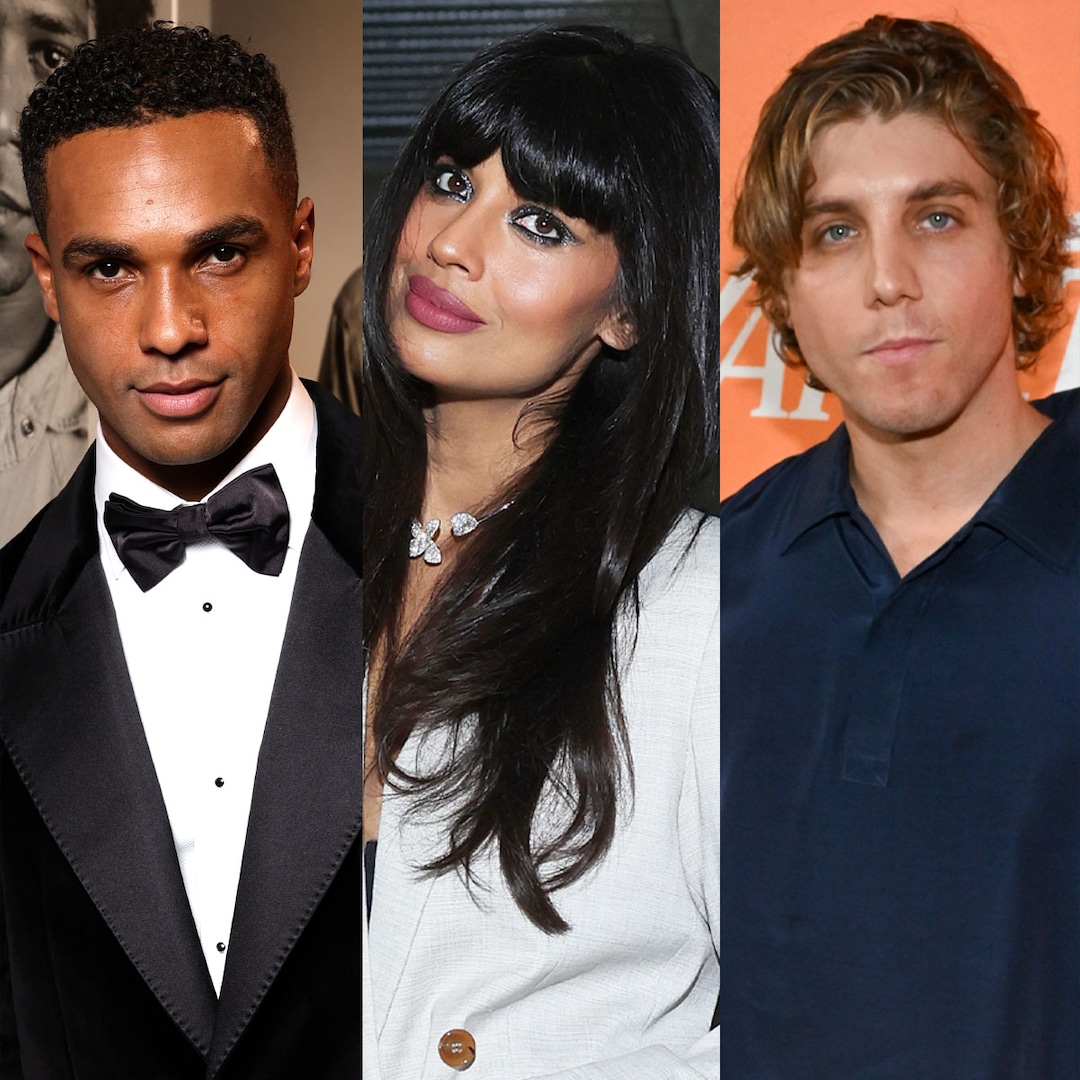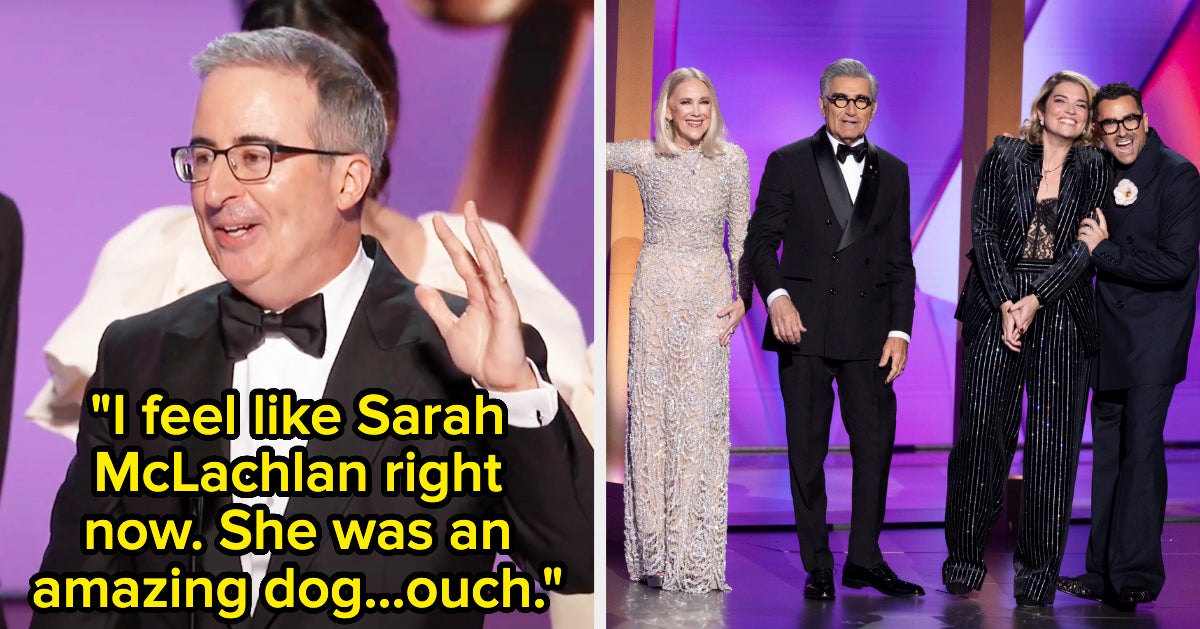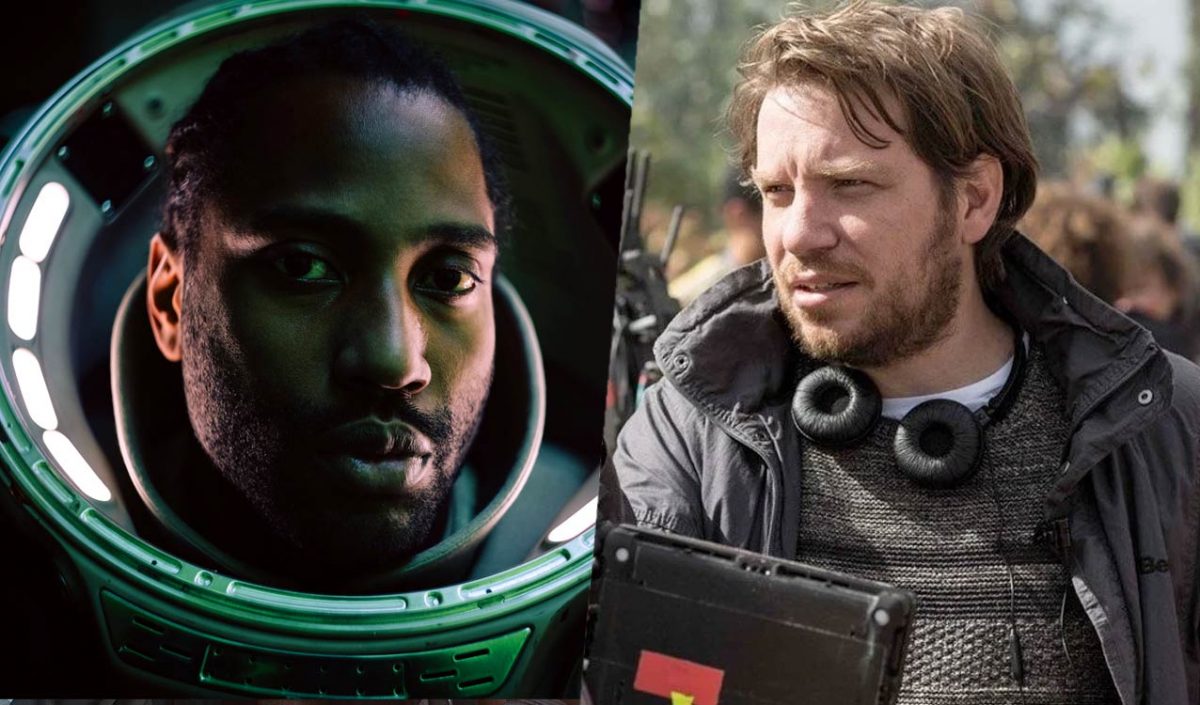
Gareth Edwards Talks The Dangers & Advancement Of A.I., The ‘Star Wars’ Influence & More [Interview]
Sep 22, 2023
He’s captivated our imaginations with iconic monsters and futuristic space battles, using a symphony of light, scale, sound, and mastery over visual effects. Oh, and he really knows how to make Darth Vader scary. No, we’re not talking about George Lucas. We’re talking about Gareth Edwards. Though we might as well be talking about Lucas, given how much the Welsh filmmaker channels the former’s philosophy into his work. It also helps that he has a penchant for inspired collaborations with ILM (Industrial Light and Magic) while proving himself a distinct, spiritual voice in science fiction. Simply put, Edwards is living the dream. He’s gotten to play in the sandbox of two of cinema’s most beloved and historic franchises — “Godzilla” and “Star Wars”— and now is using that success and goodwill to put forth the kind of original, thought-provoking, sci-fi blockbuster film fans have been craving with “The Creator.”
READ MORE: ‘The Creator’ In IMAX: Director Gareth Edward’s Says His Sci-Fi Epic Is “‘Apocalypse Now’ Meets ‘Blade Runner’” [First Look Recap]
“The Creator” stars John David Washington as American soldier Joshua Taylor in the 2070s, searching for his wife (Gemma Chan) amidst a global war over artificial intelligence, one where the West— devastated by an AI-prompted tragedy— is attempting to destroy it, while the East— having never had such a catastrophe occur – remains steadfast in utilizing it. True to its name, much of “The Creator” involves the insecurity of being surpassed by one’s own creation. Given the strong Vietnam/Iraq War iconography at play here (another parallel to Lucas), it’s easy to see the film as an imperialist indictment. Specifically, this idea of the West, America, grappling with what it once was, feeling insecure, unable to accept and advance like many of the characters in this film, and falling back on old think. However, as potent as those ideas may be, the “Rogue One” director wants to make his intentions clear.
“It wasn’t trying to be a political film in that sense but, inevitably, in dealing with a global war, you can’t escape those fears,” explained Edwards. “I wanted to create a divide. The idea of ‘East vs. West’ felt very simple.”
“The Creator” also introduces the insanely talented Madeleine Yuna Voyles as a supposedly world-threatening weapon housed in the body of a little girl. The road trip dynamic between her and Washington is really the driving force behind the film and, interestingly enough, was the initial idea behind his directorial debut, “Monsters.” “I only have five ideas, so I have to be careful which ones I use when,” Edwards joked. “I tried to put that [concept] in my first movie, and they said, ‘No, no, no, no, that’ll be really expensive. We can’t do military soldiers and things like this.’ And so it became a love story.”
Edwards elaborated on the “lost child” dynamic, which has appeared to varying degrees in each of his features, and how it became a beloved trope to him.
“Essentially what happened is, in 2000, one late night, I was doing visual effects at home—I used to do that for a living—and there was this thing on TV on Channel 4, and I didn’t know what it was, it was like a samurai and a child. And it just grabbed me instantly, like, what the hell is this film? What is this? And I tried to find it. The internet was in the early days. It was hard to figure out what this thing was. I finally figured out it was ‘Lone Wolf and Cub’—a series of Japanese films and manga book series. And I got them all and watched them, and I just loved that dynamic between a sort of jaded warrior and a little child.”
Edwards detailed his fairly rapid development of the film’s story, sparked by a drive across the United States. “I went to my girlfriend’s parents’ house in Iowa after ‘Rogue One’ had finished. It’s like a three-day drive across America, and there’s all this farmland,” Edwards recalled. “I saw this factory go by and thought I saw a Japanese logo on it. I toyed with doing a robot movie about what it would be like to be built in that factory, to go outside for the first time and see the sky, and what would go through your head. Then I pictured the robot as a kid, then ‘Lone Wolf and Cub,’ and by the time we got to her parent’s house, I had the whole movie mapped out in my head.”
“The Creator” crafts its visuals primarily from its real-world locations, particularly in southeast Asia, where Edwards was drawn to the contrasting snapshots in time provided by the environment, and it’s something that’s informed much of his storytelling instincts. “I’d been there when I was about 12, and it’d had a massive effect on me,” said Edwards. “I went to Hong Kong and Thailand, and it was unlike anything I had ever seen or experienced and really affected me in a way that I didn’t probably appreciate.”
“The George Lucas lesson of ‘Star Wars’ is, you take things that are really profound, mythical storytelling, spirituality from a thousand years ago, and then you go and take things from a thousand years in the future—robots and spaceships—and bring them together,” he added. “You don’t use anything from today. The closest places in the world to that dynamic are in Asia. You go to cities like Bangkok and Tokyo, megacities of the future, where you stand somewhere, and it looks like ‘Akira,’ but you go around the corner and find an ancient temple with a Buddhist monk in it. I love that. I think that just fires everything in my brain.”
While certainly not Edwards’ original intent, there’s no denying that incorporating A.I. into “The Creator” was all too prescient and disturbingly relevant with its upcoming release later this month. Artificial intelligence threatens entire professions and is particularly a hot-button issue amidst the ensuing battle between the artists of the film industry and massive corporations who believe that writers and actors can be replaced with an algorithm.
“What was fascinating was, when I was first pitching “The Creator,” the question was always, ‘Why would we ban A.I.? It’s gonna be amazing,’” Edwards recounted with a hint of amusement. “And now, with the film coming out, the idea of banning A.I. is kind of a given. It’s quite strange watching the movie now.”
For as much as Edwards’ film’s setup feels ripped from the headlines, the idea behind his interpretation of A.I. served more as an allegory for the other, and given the political and thematic undertones we’ve already discussed; it’s clear to see how that played into his characterization of A.I. in the film.
“If our film’s doing anything different, we tried to make the A.I. incredibly human,” Edwards explained. “Visually, they’re clearly technological, but behaviorally, they’re just like us. The actors would ask, ‘How should I talk? How should I walk?’ and the direction was ‘No, no, in your mind, you’re a human.’ After a while, I stopped telling actors whether or not their character was going to be A.I. My favorite thing in the movie is we would film villagers and people in real locations in temples and in the Himalayas or wherever we went, and they were chatting or relaxed, smoking whatever it was, doing their thing. I would film them so excited like, oh my God, if I can make this person a robot, it’s going to be so cool. They weren’t playing up to the camera; they were just making a meal or helping a little kid. I love that naturalism. That’s the stuff that felt fresh where it’s like, I can’t really recall that kind of thing before.”
Edwards has always worn his influences on his sleeve in interviews, and he closes out the conversation with a series of remarks on what drives his distinct documentarian-like style. “With every movie I make, I have an internal fight in my soul,” said Edwards. “I grew up loving all the obvious people, Spielberg, James Cameron, Lucas, Kubrick, and half of me always pictures my films that way—very considered, very storyboarded, very controlled and perfectly structured.” Edwards, however, points out that, while on set, his set pieces often go a different way. “The other half wants it to feel really real and not like a movie. The ‘holy grail’ is making the audience feel like this could be a documentary,” he added. “I don’t want to write it. Let it all be improvised and handheld. But I’m always disappointed if it’s only one or the other because it doesn’t have both flavors. So, I’m constantly trying to get this hybrid of those two. In this movie, we achieved just that. We storyboarded certain set pieces and had good visual references, but once we had the camera on it, we threw out the plan and responded to what was interesting.”
Edwards further elaborated on how these two approaches would meld together, in real time, during a take. “I get most excited when I have an idea, and then something starts happening that’s better than mine,” said Edwards. “And it can be as simple as just light. We thought we were going to do this shot. Then the actor goes over here, it’s like, ‘Oh shit, now that looks crap.’ And we just move the camera. And then suddenly you go, ‘Oh, this looks great. I would never have thought of that.’”
And that, ultimately, is what Edwards expressed as his filmmaking ethos, how he’s the product of those aforementioned creators who’ve come before but whose creations have taken on a life of their own, separating him as a true visionary amongst his peers. “If you close your eyes and picture a movie, you’re probably pulling from other films and experiences you’ve had subconsciously. But when that gets shattered, and you can’t do that, and you have to find something new, that’s when you build a movie that feels fresher and more original. That’s the goal, is to try and not get your way. Have it go wrong slightly. I get most excited when I have an idea, but then something happens that’s better than my idea. You’re always trying to find the thing you wouldn’t have thought of.”
“The Creator” hits theaters on September 29, with early access screenings in select cinemas on September 27.
Publisher: Source link
Mandy Moore Questioned The Need For Paparazzi, And She Has A Really Good Point
"They think I don't see them."View Entire Post › Disclaimer: This story is auto-aggregated by a computer program and has not been created or edited by filmibee.Publisher: Source link
Sep 20, 2024
People We Meet on Vacation Cast Revealed for Book’s Movie Adaptation
There are some more people to meet on vacation. The highly anticipated film adaptation of author Emily Henry’s bestselling romance novel People We Meet on Vacation has added more star power to the cast after initially casting actors Tom Blyth…
Sep 20, 2024
Here's Everything You Missed At The 2024 Emmy Awards, If You Didn't Get A Chance To Watch Them
The Schitt's Creek cast hilariously reunited on stage to end the 2024 Emmy Awards.View Entire Post › Disclaimer: This story is auto-aggregated by a computer program and has not been created or edited by filmibee.Publisher: Source link
Sep 19, 2024
Nick Cannon Shares Update on Ex Mariah Carey After Deaths in Family
Mariah Carey is showing that she can make it through the rain. The singer's ex-husband, Nick Cannon—with whom she shares 13-year-old twins Monroe and Moroccan—shared an update on how she's holding up after losing her mother, Patricia Hickey, and sister, Alison Carey, on the same…
Sep 19, 2024


